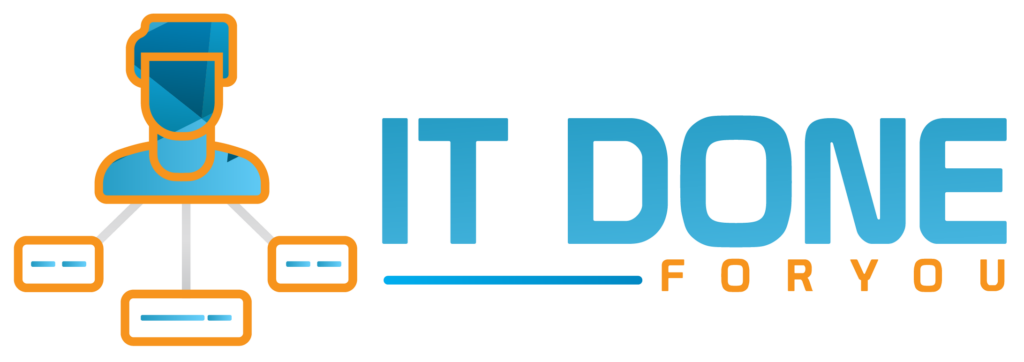Log4Shell is a Log4j vulnerability on millions of computers that connect to the internet. It’s a piece of software that records regular activities that occur on computers. Millions of attempts happen regularly with the intent to exploit this severe weakness.
More than 80% of Java packages are affected by the Log4j vulnerabilities, and the Apache software cannot simply be updated. Instead, there’s a process required by different teams that must all take part in addressing the flaw.

What Exactly Does Log4J Do?
Log4j records and communicates events about what happens on a given system and then send that data to system administrators. It’s also an open-course software from Apache.
For example, if you get a 404 message when you click on a link, that tells you that either that page doesn’t exist or you simply can’t reach it. The event, or more specifically the lack of a web page, is recorded in a Log4j log.
Log4j is a Java logging framework that records and then communicates events about what happens on a given system. The software then sends that information to system admins. Many businesses and organizations use it as a popular tool, but it has a significant security flaw that allows hackers to inject malicious code into log files.

What Exactly Does Log4J Do?
Log4j records and communicates events about what happens on a given system and then send that data to system administrators. It’s also an open-course software from Apache.
For example, if you get a 404 message when you click on a link, that tells you that either that page doesn’t exist or you simply can’t reach it. The event, or more specifically the lack of a web page, is recorded in a Log4j log.
Log4j is a Java logging framework that records and then communicates events about what happens on a given system. The software then sends that information to system admins. Many businesses and organizations use it as a popular tool, but it has a significant security flaw that allows hackers to inject malicious code into log files.
What Role Does Log4Shell Play?
Log4Shell is a feature that allows Log4j to log the username and the error and send the message back and forth. Log4j further allows third-party software to submit extra code to these messages. Adding additional data can result in cybercriminals using this vulnerability to steal sensitive data. They can even take control of specifically targeted systems.
Since it’s easy to exploit Log4Shell with a reverse-engineering framework, it becomes an easy target for criminals to use. The first vulnerability was discovered by Semmle, and it is a Java deserialization vulnerability. Specially crafted serialized java objects exploit this weakness by targeting specific systems. When Log4j tries to deserialize the object, it could allow the attacker to execute malicious code on the target system.

What Role Does Log4Shell Play?
Log4Shell is a feature that allows Log4j to log the username and the error and send the message back and forth. Log4j further allows third-party software to submit extra code to these messages. Adding additional data can result in cybercriminals using this vulnerability to steal sensitive data. They can even take control of specifically targeted systems.
Since it’s easy to exploit Log4Shell with a reverse-engineering framework, it becomes an easy target for criminals to use. The first vulnerability was discovered by Semmle, and it is a Java deserialization vulnerability. Specially crafted serialized java objects exploit this weakness by targeting specific systems. When Log4j tries to deserialize the object, it could allow the attacker to execute malicious code on the target system.

Cisco Talos discovered the second vulnerability, and it is a remote code execution vulnerability. Specially crafted messages exploit the weakness resulting in an attack on the target system. When Log4j tries to process the message, it could allow the attacker to execute malicious code on the target system.

What Is The Bigger Concern?
Log4Shell is a logging tool for the Bash shell. It allows you to log the output of your commands to a file or view the log in a terminal. This can be useful for troubleshooting problems or tracking the progress of long-running commands. Log4Shell is open source and available on GitHub.
Log4Shell makes it possible to insert malicious data into Log4j and cause it to spread quickly. Log4j is an extremely widespread piece of software that is everywhere, from Minecraft to cloud services to Amazon Web Services. It’s also a standard logging utility in software dev tools and security software.
The nature of Log4j is the very reason that hackers have the power to have a large reach. They can target just about anyone from your average home user to major service providers with the vulnerability. Security research and source code developers aren’t immune either.
Larger companies may be able to coordinate teams to patch the software, but the reality is that coordinating organizational groups is hard. Many organizations may take a long time to get it done if they can get it done at all. Even worse, many companies may not even realize it needs to be done.

What Is The Bigger Concern?
Log4Shell is a logging tool for the Bash shell. It allows you to log the output of your commands to a file or view the log in a terminal. This can be useful for troubleshooting problems or tracking the progress of long-running commands. Log4Shell is open source and available on GitHub.
Log4Shell makes it possible to insert malicious data into Log4j and cause it to spread quickly. Log4j is an extremely widespread piece of software that is everywhere, from Minecraft to cloud services to Amazon Web Services. It’s also a standard logging utility in software dev tools and security software.
The nature of Log4j is the very reason that hackers have the power to have a large reach. They can target just about anyone from your average home user to major service providers with the vulnerability. Security research and source code developers aren’t immune either.
Larger companies may be able to coordinate teams to patch the software, but the reality is that coordinating organizational groups is hard. Many organizations may take a long time to get it done if they can get it done at all. Even worse, many companies may not even realize it needs to be done.
What’s The Damage?
It’s readily accepted that hackers are continuously scanning for new weaknesses. To carry out effective attacks, they have a specific method to figure out if your business is open for attack by way of a machine steadily sending out queries. The goal is to trigger a log message or error that can then include malicious code.
The coded instructions create a reverse shell to remotely attack the targeted server. Significant numbers of hackers are working on using Log4j maliciously by deploying ransomware and bitcoin mining software to gain access to sensitive information.
More importantly, these weaknesses could allow an attacker to execute arbitrary code on the target system and take control of it. It is therefore important to patch these vulnerabilities as soon as possible.

What’s The Damage?
It’s readily accepted that hackers are continuously scanning for new weaknesses. To carry out effective attacks, they have a specific method to figure out if your business is open for attack by way of a machine steadily sending out queries. The goal is to trigger a log message or error that can then include malicious code.
The coded instructions create a reverse shell to remotely attack the targeted server. Significant numbers of hackers are working on using Log4j maliciously by deploying ransomware and bitcoin mining software to gain access to sensitive information.
More importantly, these weaknesses could allow an attacker to execute arbitrary code on the target system and take control of it. It is therefore important to patch these vulnerabilities as soon as possible.


Why Won’t Log4j Flaws Be Fixed Soon?
Even though there are serious security flaws in the popular logging framework Log4j, they will not be fixed anytime soon. This was made clear by Apache Software Foundation (ASF) chairman Greg Stein, who said that the flaws will not be addressed for a “long time to come.”
This is bad news for developers and businesses that rely on the popular Java logging framework, as cybercriminals can easily exploit this weakness discovered in Log4j. The vulnerability, which was made public in February of this year, affects more than 80% of Java packages and allows attackers to inject malicious code into log files.
Because it is so widespread, it will be difficult to fix quickly. The code takes control of a system, but since it is part of a lot of software, it’s hard to pin down, especially when it comes to indirect dependencies.

Why Won’t Log4j Flaws Be Fixed Soon?
Even though there are serious security flaws in the popular logging framework Log4j, they will not be fixed anytime soon. This was made clear by Apache Software Foundation (ASF) chairman Greg Stein, who said that the flaws will not be addressed for a “long time to come.”
This is bad news for developers and businesses that rely on the popular Java logging framework, as cybercriminals can easily exploit this weakness discovered in Log4j. The vulnerability, which was made public in February of this year, affects more than 80% of Java packages and allows attackers to inject malicious code into log files.
Because it is so widespread, it will be difficult to fix quickly. The code takes control of a system, but since it is part of a lot of software, it’s hard to pin down, especially when it comes to indirect dependencies.
What’s an Indirect or Direct Dependency?
Direct dependencies are like direct connections. They’re easy to patch and fix. Indirect dependencies are different because they’re not connected straightforwardly. In this case, packages pull from another library or source that calls Log4j. The response is then routed back to the query origin. The end result resembles a chain of data packages that go back and forth.
When weaknesses are in these dependency chains, it’s much harder to fix the problem. There are around 440,000 Java packages at Maven Central alone, and of those, over 35,000 have Log4j vulnerabilities. In those packages, a significant portion of indirect dependencies finds their way to these packages.
Thousands of these packages have been fixed, but there is a long way to go due to the complexity and length of the dependency chains that exist within the way the software functions.

What’s an Indirect or Direct Dependency?
Direct dependencies are like direct connections. They’re easy to patch and fix. Indirect dependencies are different because they’re not connected straightforwardly. In this case, packages pull from another library or source that calls Log4j. The response is then routed back to the query origin. The end result resembles a chain of data packages that go back and forth.
When weaknesses are in these dependency chains, it’s much harder to fix the problem. There are around 440,000 Java packages at Maven Central alone, and of those, over 35,000 have Log4j vulnerabilities. In those packages, a significant portion of indirect dependencies finds their way to these packages.
Thousands of these packages have been fixed, but there is a long way to go due to the complexity and length of the dependency chains that exist within the way the software functions.

How Do You Stop The Attacks?
The nature of Log4j makes it tough to know if it’s part of existing software because of the way it embeds itself among other software applications. Sys admins have to inventory to see if it’s even a part of the existing software repository. If they don’t, they risk missing the problem and opening themselves to attack.
There’s also not a single one-size-fits-all approach because of the different ways Log4j is part of a system. It’s possible to require multiple approaches because of the variety of software and hardware in a company’s infrastructure.
How Do You Stop The Attacks?
The nature of Log4j makes it tough to know if it’s part of existing software because of the way it embeds itself among other software applications. Sys admins have to inventory to see if it’s even a part of the existing software repository. If they don’t, they risk missing the problem and opening themselves to attack.
There’s also not a single one-size-fits-all approach because of the different ways Log4j is part of a system. It’s possible to require multiple approaches because of the variety of software and hardware in a company’s infrastructure.

For example, if it’s part of the software on your routers, then a full system update might be required. On the other hand, if it’s a simple part of your software suite, such as the case with Minecraft, all you need is to update your version to the latest. Worst case scenario, you may have to remove the lines of code yourself manually.
Given the different ways Log4j presents itself, you may need to apply a fix that requires coordination from developers in various fields in addition to distributors and system operators. You may even need users to take specific actions to fix the issue. The grand delay that this kind of song and dance causes is exactly why it will take a long time before the Log4j vulnerability becomes a thing of the past.
For more information or assistance with Log4j, please feel free to contact IT Done For You with your questions. We’re happy to help!

For example, if it’s part of the software on your routers, then a full system update might be required. On the other hand, if it’s a simple part of your software suite, such as the case with Minecraft, all you need is to update your version to the latest. Worst case scenario, you may have to remove the lines of code yourself manually.
Given the different ways Log4j presents itself, you may need to apply a fix that requires coordination from developers in various fields in addition to distributors and system operators. You may even need users to take specific actions to fix the issue. The grand delay that this kind of song and dance causes is exactly why it will take a long time before the Log4j vulnerability becomes a thing of the past.
For more information or assistance with Log4j, please feel free to contact IT Done For You with your questions. We’re happy to help!
Share This Story, Choose Your Platform!
Let’s have a 15-minute video call
We are now taking on new clients.





